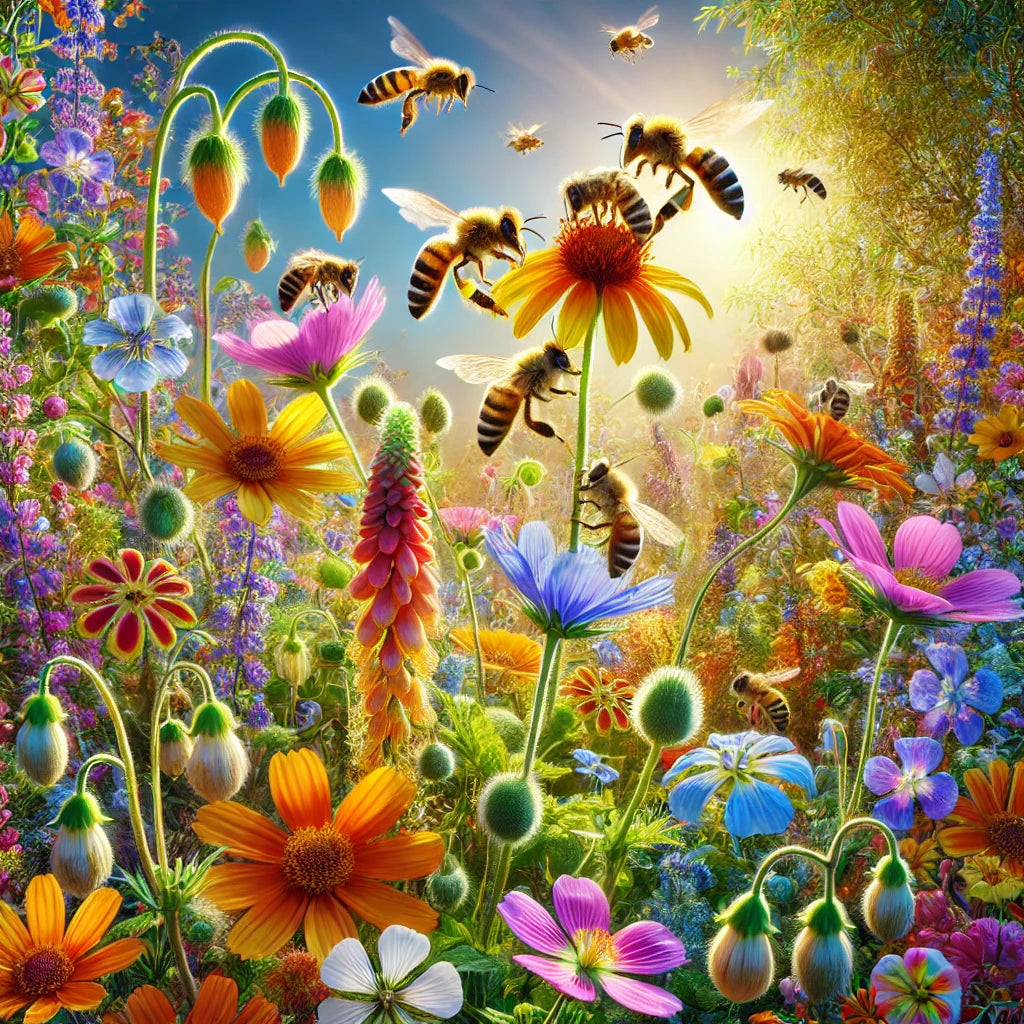The relationship between bees and flowers, known as bee and flower mutualism, plays a crucial role in maintaining biodiversity. This plant-pollinator mutualism benefits both the plants and the bees: plants get pollinated, which is essential for reproduction, and bees receive nectar and pollen to nourish their colonies.
This mutual exchange has evolved over millions of years, contributing significantly to the diversity of plant species and ecosystems we see today.
What is Bee and Flower Mutualism?
Bee and flower mutualism is a symbiotic relationship where both the bee and the flower benefit from their interactions. The bee collects nectar and pollen from the flower, which it uses to feed itself and its young. In return, the bee helps the flower by transferring pollen from one bloom to another, facilitating cross-pollination. This process leads to genetic diversity in plants, which produces stronger and healthier offspring.
The process also highlights how the life cycle of bees is deeply interconnected with the plants they pollinate. Bees rely on a steady supply of pollen and nectar to thrive, and without bees, many plants would struggle to reproduce.
The Importance of Plant-Pollinator Mutualism for Biodiversity
Plant-pollinator relationships are essential for maintaining biodiversity. This mutualism supports the proliferation of thousands of plant species, contributing to diverse and resilient ecosystems. In many cases, specific plants rely on specific pollinators, an extreme form of mutualism known as obligate mutualism, where the survival of both species depends on their interaction. Without bees and other pollinators, many plants could become extinct, leading to a decline in overall biodiversity.
The interdependence of bees and flowers has significant implications for agriculture as well. Honey bees are vital to agriculture because they pollinate many of the crops we rely on for food, such as almonds, apples, and blueberries. Understanding this relationship can help us protect and support bee populations, which in turn supports our food systems and ecosystems.
How Beekeepers Can Support Pollination
Beekeepers play a critical role in supporting bee and flower mutualism. One way to enhance the pollination process is by using bee trap attractants, which help direct bees to areas where pollination is most needed. Additionally, beekeepers can manage swarming and bee hive relocation to ensure that bees are in the right places to pollinate effectively.
For those looking to take a more hands-on approach, consider learning how to start a bee farm. Supporting bee populations through sustainable beekeeping practices can have a significant impact on plant diversity and agricultural productivity.
Benefits of Bees for Ecosystems and Agriculture
The benefits of bees extend far beyond simple pollination. Bees contribute to healthy ecosystems by supporting plant reproduction, which in turn provides food and habitat for other wildlife. They are also essential for the production of many agricultural crops. Without bees, our food supply would face severe shortages, making it crucial to protect bee populations and ensure they continue their vital work.
Pollination by bees also leads to stronger plant genetics, producing more resilient plants that are better equipped to withstand environmental challenges.
Boost Pollination with Swarm Commander
The mutualistic relationship between bees and flowers is crucial for the survival of both species and the overall health of our planet. By supporting bees through sustainable practices and understanding the importance of plant-pollinator relationships, we can help maintain biodiversity and ensure the stability of our food systems.
Maximize your bee and flower mutualism efforts with Swarm Commander. Our products, including bee trap attractants and bee hive relocation tools, are designed to support healthy bee populations and improve pollination efficiency. Visit Swarm Commander today to explore our range of beekeeping solutions and help your bees thrive while contributing to global biodiversity!
Frequently Asked Questions About Bee and Flower Mutualism
Q1. What is bee and flower mutualism?
Bee and flower mutualism is a symbiotic relationship where bees collect nectar and pollen from flowers, and in return, they help the flowers by transferring pollen for cross-pollination.
Q2. Why is plant-pollinator mutualism important for biodiversity?
Plant-pollinator mutualism helps maintain biodiversity by supporting the reproduction of thousands of plant species, which in turn supports diverse ecosystems.
Q3. How can beekeepers support plant-pollinator mutualism?
Beekeepers can support this relationship by using tools like bee trap attractants to guide bees to crops that need pollination, and managing hives effectively to ensure strong bee populations.
Q4. What is obligate mutualism?
Obligate mutualism occurs when a specific plant and pollinator rely entirely on each other for survival. If one becomes extinct, the other would follow.
Q5. How do bees benefit agriculture?
Bees are essential pollinators for many agricultural crops, helping to produce fruits, vegetables, and nuts. Without bees, agricultural productivity would suffer greatly.



